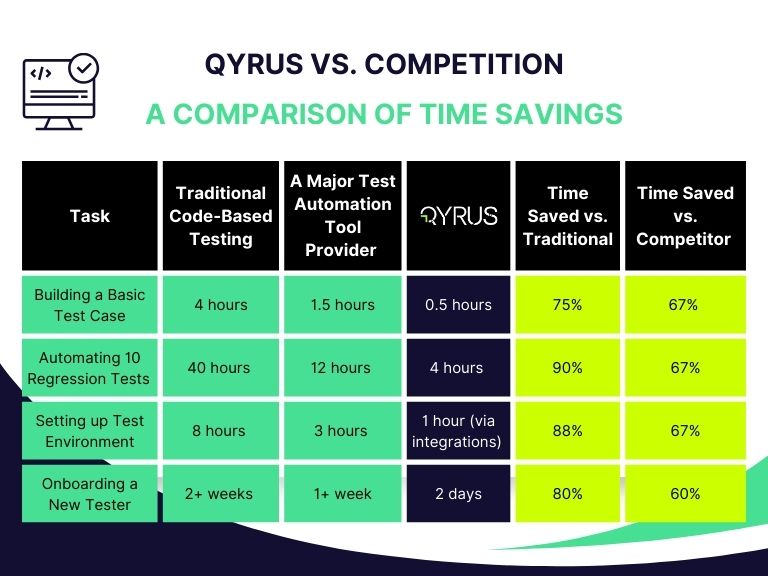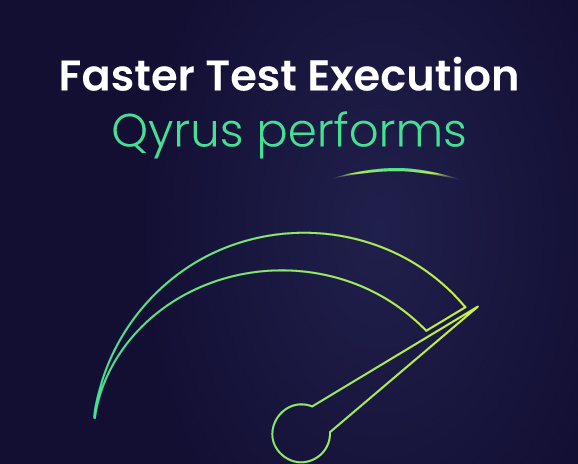Mastering the Software Testing Life Cycle: A Guide to Accelerated Time to Market in the AI Era

Introduction: The Time Crunch in Software Development
For many years, traditional testing methodologies have served as the standard approach within the software development process. However, these conventional methods often struggle to provide the speed and efficiency required in today’s fast-paced digital landscape. As Enkonix notes, software time-to-market can range from six months to as long as five years, largely dependent on the product’s complexity.
In fact, lengthy test cycles frequently act as a significant bottleneck, impeding an organization’s agility and slowing down its ability to compete. Ranorex points out that quality assurance (QA) for a software application can take anywhere from 6 to 10 weeks, influenced by the intricacies of both the testing plan and the application itself.
Unfortunately, these extended testing phases can hinder a company’s capacity to deliver new features and products to market promptly. To fully understand this issue, it’s essential to analyze software testing life cycle and how it relates to the broader context of the software development life cycle.
But what if testing could be transformed from a roadblock into a catalyst for speed? Imagine a scenario where testing is a streamlined process that accelerates, rather than delays, your time to market. Or imagine a world where you can discover bugs before UI testing, allowing fixes to be completed along with UI development.
Fortunately, modern approaches are emerging that offer the promise of dramatically reducing testing time and enabling significantly faster software releases, allowing organizations to deliver value to their customers more quickly and efficiently. In this blog post, we will explore strategies to optimize the software testing life cycle and achieve this acceleration.
The Quicksand of Lengthy Test Cycles: Understanding the Pain
Prolonged test cycles present a significant obstacle for software development organizations, hindering their ability to deliver software releases in a timely and efficient manner. Let’s explore the core problems arising from these extended timelines:
- The Grip of Increased Time-to-Market: Lengthy test cycles directly translate to delayed software releases, increasing the time it takes for new features and products to reach customers.
- The Erosion of Competitiveness: Delays in software releases can severely compromise an organization’s competitiveness. In today’s dynamic markets, competitors who can deliver updates and innovations more rapidly gain a distinct advantage, potentially capturing market share.
- The Strain on Resources and the Surge in Costs: Extended test cycles demand more resources, leading to increased costs. These resources include increased personnel hours from testing and development teams, as well as the need for expanded testing infrastructure to accommodate diverse operating systems and devices.
- The Toll on Morale: Frustration and Burnout: The constant pressure of prolonged timelines, combined with the often-repetitive nature of lengthy testing processes, can lead to frustration and burnout among testing and development teams.
- The Specter of Missed Market Opportunities: Delays in software releases can result in missed market opportunities. In rapidly evolving industries, even short delays can mean missing crucial market windows.
Unraveling the Reasons Behind the Delays: Why Test Cycles Drag On
To effectively address the problem of lengthy test cycles, it’s crucial to understand the underlying factors that contribute to these delays. Let’s examine the common reasons why test cycles often drag on:
- The Weight of Reliance on Manual Testing: One significant contributor to prolonged test cycles is the heavy reliance on manual testing processes. These methods are inherently time-consuming, as each test case requires execution by a human tester. Manual testing is also susceptible to human error and can become increasingly difficult to scale as software complexity grows.
- The Burden of Complex Test Frameworks: Organizations that depend heavily on code-based testing often develop or utilize complex test automation frameworks. Maintaining and scaling these frameworks can introduce substantial overhead and add significant time to the testing process.
- The Pitfall of Inadequate Test Coverage: To expedite releases, teams may inadvertently compromise on testing thoroughness, resulting in inadequate test coverage. While this might seem to accelerate the initial testing phase, it often leads to a higher risk of defects slipping into production, which then necessitates costly and time-consuming rework.
- The Challenge of Regression Testing: Each new software release or update necessitates regression testing to ensure that existing functionality remains unaffected. This requirement can significantly extend testing time, particularly in rapidly evolving software with frequent updates.
- The Impediment of Siloed Teams and Poor Collaboration: When development and testing teams operate in silos, characterized by a lack of effective communication and collaboration, it can lead to significant delays and inefficiencies in the testing process. Issues may be discovered late in the cycle, requiring developers to revisit code, and poor communication can result in misunderstandings and duplicated efforts.
- The Obstacle of Learning Curves for Testing Tools: Implementing new testing tools can initially slow down the testing process if these tools have steep learning curves. Testers may require considerable time and effort to become proficient, delaying test creation and execution.
- The Difficulty of Integration with Existing Systems: Testing tools that lack seamless integration with other critical systems, such as Continuous Integration/Continuous Delivery (CI/CD) pipelines and defect management tools, can create bottlenecks in the software development lifecycle.
Lengthy test cycles trigger a chain reaction of negative consequences, starting with delayed software releases that reduce revenue and increase operational costs. This then leads to damaged brand reputation and lowered employee morale and finally hinders innovation as resources are consumed by simply trying to release on time. To avoid these repercussions, prioritizing efficient testing is essential.
A New Era of Testing: Modern Solutions for Speed
To overcome the delays and negative impacts of long test cycles, a new wave of modern software testing solutions is emerging, prioritizing speed, efficiency, and accuracy throughout the SDLC. A key innovation is codeless automation, which simplifies test creation by removing the need for extensive coding and enabling users to build tests through intuitive interfaces with action types. This democratization of test automation makes it accessible to more team members and significantly reduces the time to build and maintain test scripts.
Furthermore, AI is revolutionizing software testing by enhancing efficiency, accuracy, and coverage. AI-infused testing can automate test script maintenance, analyze test data, and even generate test cases autonomously, minimizing manual effort and improving test reliability. Modern solutions also emphasize continuous testing with seamless integration into CI/CD pipelines, and offer comprehensive testing across web, mobile, and APIs within a unified platform.
Qyrus: An AI-Driven, Outside-In Approach to SDLC Acceleration
Qyrus redefines efficiency not just in testing, but across the entire Software Development Life Cycle (SDLC). Engineered for speed and effectiveness, Qyrus employs a unique Outside-In approach, moving beyond traditional testing silos to provide a holistic, end-to-end perspective on software quality and delivery.
At the heart of this approach are Qyrus’s cutting-edge AI capabilities, including Generative AI and Reusable Agentic Workflows. These intelligent systems are designed to be inherently aware of your underlying systems and processes across web, mobile, and API platforms. This awareness allows Qyrus to:
- Proactively Identify Issues: Instead of reacting to bugs found late in the cycle, Qyrus’s AI anticipates and flags potential problems throughout the SDLC.
- Ensure System Consistency and Reliability: By understanding the interconnectedness of components, Qyrus helps maintain stability and coherence from development through deployment.
- Enable Early Defect Detection: The Outside-In perspective, powered by AI, shifts defect discovery significantly earlier in the lifecycle, drastically reducing remediation costs and effort.
This intelligent, holistic strategy directly addresses the core challenge of lengthy development and testing cycles. By leveraging AI that understands the bigger picture and intervenes proactively, Qyrus streamlines workflows, enhances collaboration, and significantly accelerates your speed to market, ensuring robust, high-quality software delivery with unprecedented efficiency.
Quantifying the Gains: Real-World Time Savings with Qyrus
The Forrester Total Economic Impact (TEI) study on Qyrus offers compelling evidence of the tangible time savings achieved by organizations that implement Qyrus. A key finding of the study is that Qyrus enables the regression automation of around 90% of manual test cases.
This high level of automation translates directly into substantial time savings. Beyond regression testing, Qyrus also delivers considerable time efficiencies in other critical testing phases.
The study found that Qyrus reduced User Acceptance Testing (UAT) time by 20%, leading to notable productivity gains for various stakeholders. Furthermore, Qyrus’s automated reporting capabilities significantly streamline the reporting process, saving teams nearly two days’ worth of effort in generating regular reports for QA or UAT stages.
Qyrus vs. Competition: A Comparison of Time Savings
The table below provides data to illustrate these comparative time savings:

Qyrus’s design philosophy sets it apart from competitors who often focus on technical users with complex interfaces. Instead, Qyrus is built for all users, empowering manual and novice testers to quickly automate across many different domains while also providing the highly skilled technical tester with all the bells and whistles to test even faster. This emphasis on simplicity translates to significant time savings across various testing activities.
Qyrus’s intuitive design enables faster test creation, more efficient regression automation, and quicker test environment setup and team onboarding. By simplifying the testing process, Qyrus allows teams to spend less time on test management and more time on developing high-quality software.
Conclusion: Reclaim Time and Accelerate Success
Lengthy test cycles inflict significant pain points on businesses, resulting in delayed product releases, increased costs, and a sluggish response to market demands. These extended timelines can hinder innovation, negatively impact customer satisfaction, and ultimately affect profitability.
Qyrus offers a robust solution to these challenges through its codeless automation and AI-powered testing capabilities. Organizations have experienced significant automation of manual regression test cases, leading to considerable time savings. Furthermore, Qyrus has demonstrated its ability to reduce UAT testing time and streamline reporting processes.
Qyrus’s focus on simplicity and user-friendliness provides a key advantage over competitors. Its intuitive interface empowers all users to build tests more efficiently.
Don’t let long test cycles hold you back. Reclaim your time and accelerate your success with Qyrus!
Explore Qyrus’s comprehensive features and discover how it can transform your software testing process. Start your free trial today or request a demo to experience the benefits of faster time to market and higher quality software.




